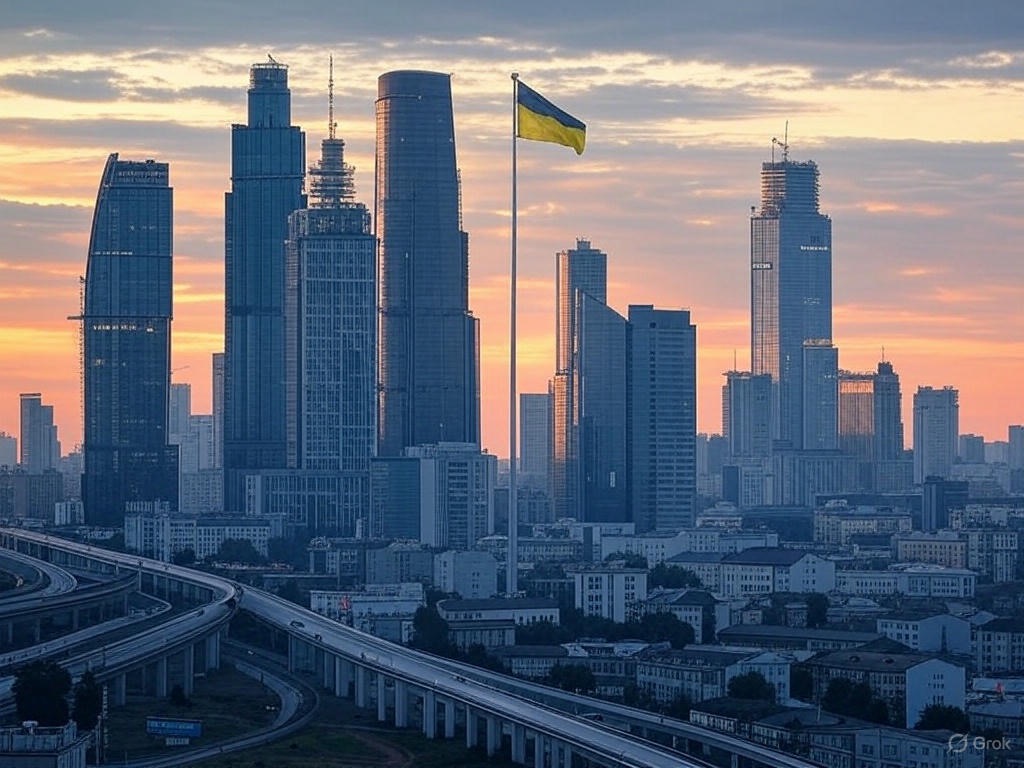Vietnam has set its sights on a monumental prize: becoming a high-income “tiger economy” by 2045. This ambitious national project, the country’s most significant economic overhaul in decades, is a bold declaration of a “new era of development.” It’s a strategy built on three interwoven pillars: a profound ideological shift towards private-sector-led growth, massive state-directed infrastructure investment, and strategic, high-stakes bets on cutting-edge industries. But as Vietnam embarks on this audacious journey, it faces a formidable gauntlet of geopolitical pressures and deep-seated structural challenges that could very well define its success or failure.
At the heart of Vietnam’s new economic architecture lies Resolution 68, a landmark policy that formally elevates the private sector from a mere “component” to “the most important driving force of the national economy.” This is more than a semantic shift; it signals a new social contract aimed at unleashing domestic entrepreneurial energy. The resolution sets ambitious targets for 2030, including doubling registered enterprises, increasing the private sector’s GDP contribution, and generating a substantial portion of state budget revenue. To achieve this, it promises a sweeping reduction in bureaucracy, improved access to land and capital, and a leveling of the playing field for domestic businesses against state-owned and foreign-invested enterprises.
This private-sector revolution is complemented by a massive state-led infrastructure push, epitomized by the $67 billion North-South High-Speed Railway (HSR). This project, a 1,541-kilometer artery connecting Hanoi and Ho Chi Minh City, is designed to slash travel times and serve as a powerful catalyst for economic development along the entire coastal corridor. In a spirit of “independence and self-reliance,” Vietnam plans to fund this behemoth primarily through domestic sources, a deliberate departure from reliance on foreign aid with its associated conditions.
Beyond infrastructure, Vietnam is making strategic, high-stakes bets on the industries of the future. In semiconductors, it’s aggressively positioning itself as a critical node in the global supply chain, attracting major investments for assembly, testing, and packaging (ATP) while pushing to move up the value chain into design and fabrication. The government is launching its first state-backed fabrication plant and aiming to train 50,000 semiconductor engineers by 2030.
In artificial intelligence (AI), Vietnam has adopted a national strategy to become a top player in ASEAN by 2030, focusing on pragmatic applications to solve domestic challenges in agriculture, manufacturing, and healthcare. The government is fostering growth through data centers, open data initiatives, and public-private partnerships.
Furthermore, a crucial pivot to renewable energy is underway. Power Development Plan 8 (PDP8) aims for renewable sources to cover at least 32% of the country’s energy needs by 2030, aligning with its net-zero carbon emissions goal by 2050. This push is not just about climate; it’s an economic imperative, as many multinational manufacturers require 100% renewable energy sourcing.
This multifaceted strategy is a complex hybrid, attempting to fuse the state-champion model of South Korea with the foreign-capital-dependent strategy of Singapore. The aspiration is to cultivate “national champions”—at least 20 large, private enterprises capable of integrating into global value chains by 2030, directly inspired by South Korea’s chaebols. However, this high-risk, high-reward bet hinges on the state’s ability to replicate the Korean model’s successes while avoiding its pitfalls, such as entrenched corporate interests and economic inequality.
Yet, this ambitious vision is constrained by a formidable triad of structural headwinds. First, Vietnam’s export-driven model is acutely vulnerable to geopolitical trade friction, particularly with the United States, its largest export market. A massive $123.5 billion trade surplus has invited intense scrutiny and the threat of punitive tariffs, creating profound uncertainty for its export-reliant industries. While U.S.-China trade tensions have created an opportunity through “friendshoring,” this success also brings heightened scrutiny over Chinese content in Vietnamese exports and potential tariff circumvention.
Second, Vietnam faces a rapidly closing demographic window. Its “golden population” period, where a large, youthful working-age population supports a relatively small number of dependents, is set to end by 2039. This means the country risks “growing old before it grows rich,” with a shrinking workforce, potential labor shortages, and intense fiscal strain on public finances due to rising pension and healthcare costs. This demographic transition is occurring with alarming speed and at a significantly lower level of per capita income than the developed nations that preceded it.
Third, as one of the world’s most climate-vulnerable nations, Vietnam confronts existential threats from sea-level rise and extreme weather. Climate impacts already cost its economy billions annually, with projections showing catastrophic escalation by 2050, potentially reducing GDP by 12% to 14.5% without massive adaptation measures. The price tag for building a climate-resilient and decarbonized economy is staggering, requiring hundreds of billions of dollars in additional investments.
These three headwinds—geopolitical trade pressures, a demographic time bomb, and an existential climate crisis—are not discrete problems but a deeply interconnected crisis. They put immense pressure on the 2045 timeline and the financial and institutional resources available to meet it. The physical assets that underpin Vietnam’s manufacturing model are the very same assets most at risk from climate impacts, making adaptation a prerequisite for the survival of the economic model itself.
The central finding of this report is that Vietnam’s success is not preordained. It hinges critically on the state’s ability to navigate the inherent contradictions within its hybrid state-capitalist model—simultaneously acting as both a market enabler and a powerful economic director. The strategy’s viability depends on executing a series of complex, interlocking reforms under immense time pressure from demographic and climate clocks.
For international investors and policymakers, Vietnam presents an arena of high-stakes opportunity and commensurate risk. Strategic engagement will require a nuanced understanding of the country’s sectoral priorities, a clear-eyed assessment of its institutional capacity for reform, and a robust framework for mitigating the interconnected risks of trade volatility, demographic decline, and climate change. The ultimate feasibility of Vietnam’s strategy rests on its institutional execution, its ability to pace and sequence reforms, its geopolitical navigation, and its capacity to finance a triple transition—infrastructure, high-tech, and climate adaptation.
Vietnam’s 2045 vision is one of the most ambitious national development plans globally. It is a testament to the country’s dynamism and its aspiration for a prosperous future. However, the path ahead is fraught with challenges, demanding not just bold policies but also flawless execution, significant institutional reform, and a measure of geopolitical good fortune.
Disclaimer: Important Legal and Regulatory Information
This report is for informational purposes only and should not be construed as financial, investment, legal, tax, or professional advice. The views expressed are purely analytical in nature and do not constitute financial guidance, investment recommendations, or a solicitation to buy, sell, or hold any financial instrument, including but not limited to commodities, securities, derivatives, or cryptocurrencies. No part of this publication should be relied upon for financial or investment decisions, and readers should consult a qualified financial advisor or regulated professional before making any decisions. Bretalon LTD is not authorized or regulated by the UK Financial Conduct Authority (FCA) or any other regulatory body and does not conduct activities requiring authorization under the Financial Services and Markets Act 2000 (FSMA), the FCA Handbook, or any equivalent legislation. We do not provide financial intermediation, investment services or portfolio management services. Any references to market conditions, asset performance, or financial trends are purely informational and nothing in this report should be interpreted as an offer, inducement, invitation, or recommendation to engage in any investment activity or transaction. Bretalon LTD and its affiliates accept no liability for any direct, indirect, incidental, consequential, or punitive damages arising from the use of, reliance on, or inability to use this report. No fiduciary duty, client-advisor relationship, or obligation is formed by accessing this publication, and the information herein is subject to change at any time without notice. External links and references included are for informational purposes only, and Bretalon LTD is not responsible for the content, accuracy, or availability of third-party sources. This report is the intellectual property of Bretalon LTD, and unauthorized reproduction, distribution, modification, resale, or commercial use is strictly prohibited. Limited personal, non-commercial use is permitted, but any unauthorized modifications or attributions are expressly forbidden. By accessing this report, you acknowledge and agree to these terms-if you do not accept them, you should disregard this publication in its entirety.



